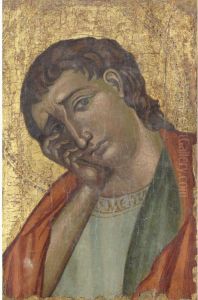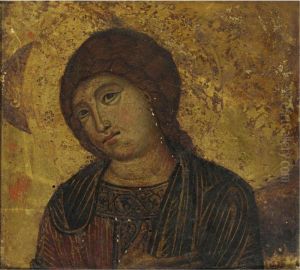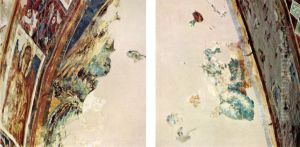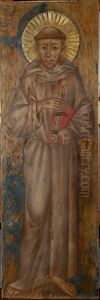Cimabue Paintings
Cimabue, also known as Cenni di Pepo or Bencivieni di Pepo, was an Italian painter and mosaicist from Florence, often considered one of the first great Italian artists to break from the Italo-Byzantine style. He is regarded as a precursor to the Italian Renaissance, although his work still has many elements of the traditional Byzantine style. His date of birth is not recorded, but it is estimated to be around 1240.
Cimabue is believed to have been a pupil of Byzantine artists, learning the craft of mosaic as well as the prevalent Greek style of painting that was common in Italy at the time. Despite these influences, Cimabue's work shows a shift towards greater naturalism and a use of more realistic proportions and shading, which distinguished him from his contemporaries and marked a departure from the stylized forms of Byzantine art.
Among his most famous works are the large crucifixes he painted for the churches of Santa Croce in Florence and San Domenico in Arezzo. These crucifixes showcase his move towards realism, with a more expressive depiction of Christ's suffering. Cimabue's most notable pupil was Giotto, who is often credited with making even more significant strides in the development of Renaissance art.
Cimabue's exact date of death is also unclear, but he is believed to have died in 1302. Although details about his life are sparse, Cimabue's legacy lies in his status as a transitional figure. His ability to innovate within the confines of the traditional Byzantine style set the stage for the coming Renaissance, which would fully blossom under the guidance of his pupils like Giotto, and others who were inspired by his move towards naturalism.



